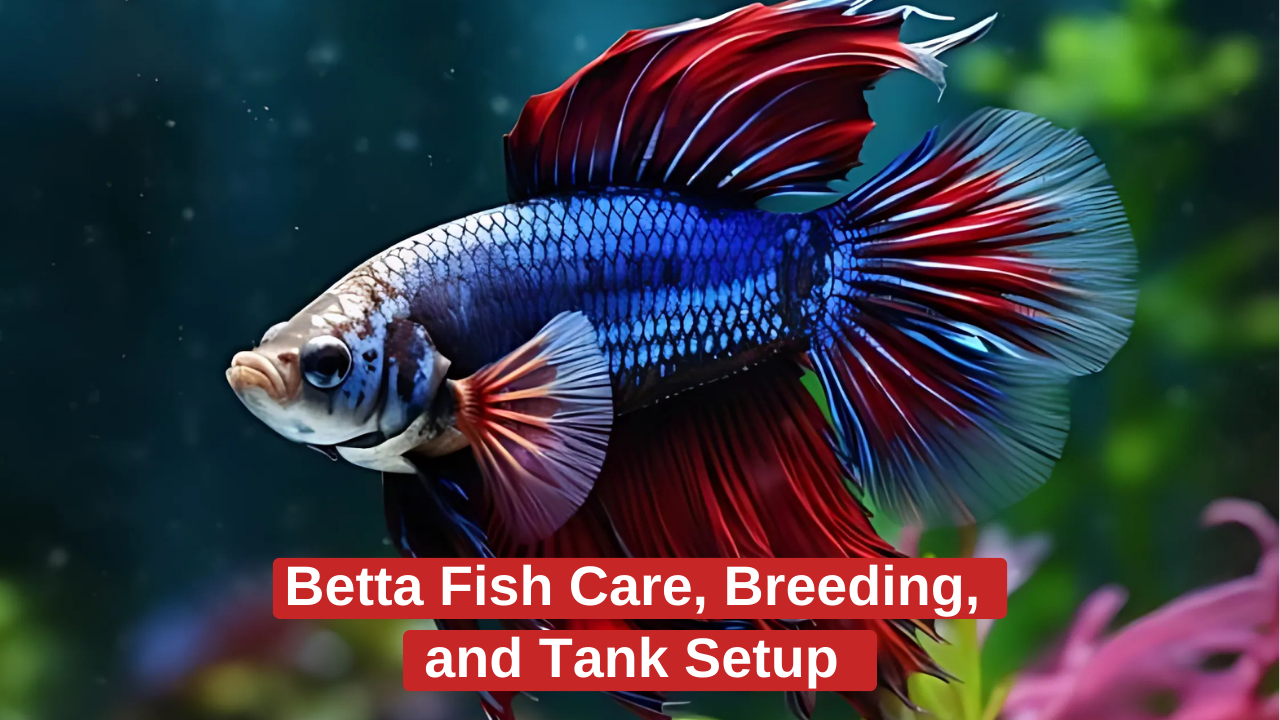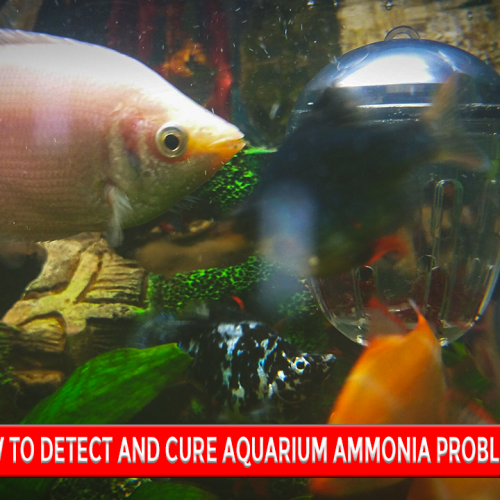Generally known as Siamese fighting fish, betta fish are one of the most beautiful and popular freshwater aquarium fishes. The brighter colors of the fins flowing from their slender body capture people’s attractions to their appearance. It is enough just to keep them in a small bowl or vase to see them happy and in good health. Really not. With this detailed guide, we will discuss everything that you need to know about the care and breeding of the spectacular-looking betta fish and the best tank setup.
Understanding Betta Fish
Betta fish are a native of Southeast Asia and were originally found in shallow pools of water, which may include rice paddies, ponds, as well as slow streams. They belong to the family of labyrinth fish, which breathe air that has passed through the surface, because they have a little organ known as the labyrinth organ. This adaptation allows labyrinth fish to survive in water where oxygen levels are low; however, simply because labyrinth fish can do this does not mean that a betta should live in a small or dirty tank.
Betta fish are very aggressive, mostly among males. That is why they are so-called “fighting fish” and if you keep one male with another in the same vessel, it might lead to a deadly encounter. That’s why an understanding of these natural behaviors is important for proper care.
Betta Fish Care
Maintaining the Health of Your Betta Fish A healthy betta fish is one that fulfills all of its basic needs. Minimum care requirements of a betta fish may be highlighted as follows:
1. Tank Size
While bettas can survive in small containers, they thrive in larger tanks. Indeed, for a single betta, a minimum of 5 gallons is recommended. That serves to provide the fish with enough space to swim around and diminish building up of noxious toxins. Larger tanks make it easier to maintain stable water conditions as well.
2. Water Conditions
Betta fish prefer warmth, so ideal water temperature ranges between 76 and 82°F (24 and 28°C) or even warmer. A heater is usually indispensable to keep the water at this temperature. The water should be clean and well-filtered with a pH between 6.5-7.5. Also, bettas thrive when given regular water changes of about 20-30% weekly in order to keep ammonia, nitrate, and nitrite at near zero.
3. Diet
A good-quality pelleted or flaked food designed for bettas is provided. As a carnivorous fish, the diet of the betta should be high in protein. At times, frozen or live foods such as bloodworms, brine shrimp, and daphnia serve as good treats. A treat should be kept in moderation since betta tend to store fat very well.
4. Tank Decorations and Plants
Bettas love to explore their surroundings, so plants, caves, and other ornaments in the tank are also a must. They should be live or silk plants, because they provide some great hide spots that would never harm the delicate fins. Sharp or rough decorations could cause fin tears.
5. Lighting and Rest
Bettas will appreciate a light-dark cycle that is predictable. Provide them with light for 8 to 12 hours a day, and give them darkness for the rest of their day so they can rest and sleep.
Betta fish Tank Setup
Setting up the proper environment for your betta is rather much more than just pumping water into the tank and placing some scattered decorations. Here is how to set up a betta tank:
1. Choose the Right Tank and Equipment
Tank should have a minimum capacity of 5-gallons. Necessary equipment includes a heater, a soft filter, a thermometer, and an aquarium light. You preferably want to use one filter that has an adjustable flow because bettas do not like strong currents. You also want your heater to be the right size to keep the temperature in your tank stable.
2. Substrate and Decorations
 Use gravel or sand as a substrate. This ornamental feature will also offer a space where you may integrate live plants, if desired. Pot the plants, rocks, and ornaments inside to give many hiding places and swimming places for the betta. Leafy tanks are favored by bettas; hence live species like java fern, anubias, or even marimo moss balls can be considered.
Use gravel or sand as a substrate. This ornamental feature will also offer a space where you may integrate live plants, if desired. Pot the plants, rocks, and ornaments inside to give many hiding places and swimming places for the betta. Leafy tanks are favored by bettas; hence live species like java fern, anubias, or even marimo moss balls can be considered.
3. Filling the Tank and Cycling
Put the heater and filter in dechlorinated water, fill the tank. Before bringing your betta home, you ought to cycle the tank. This will create good bacteria that break waste, hence not letting ammonia spikes harm your fish. It is a long process that can take from 4-6 weeks, so you have to monitor the water ammonia, nitrite, and nitrate levels.
4. Introducing Your Betta
Once the tank is cycled, introduce your betta. Float the betta in its bag or container in the tank for 15-30 minutes to acclimate it to the new water temperature. Now, begin dripping small quantities of the water from the tank into the bag as you help your betta become accustomed to the water chemistry before you release it.
Breeding Betta Fish
Bet fish breeding is an extremely interesting yet challenging activity. Here is what you need to know:
1. Selecting a Breeding Pair
You will require healthy, mature bettas. They are usually at least 4-12 months old. Opt for males with vibrant colors and long fins and females that appear healthy and whose ovipositor is visible-it is a small white spot near the ventral fins.
2. Conditioning the Betta Fish
Prior to breeding, condition both the male as well as the female betta on a high-protein diet for approximately two weeks in duration. Live or frozen bloodworms along with brine shrimp work well. This will ensure that they will be at peak fertility to spawn.
3. Setting Up the Breeding Tank
Use another breeding tank, which is 5-10 gallons shallow water, about 6″ deep. Keep temperature around 80°F (27°C), and add some plants or spawning mop to cover the female. The male will make a bubble nest at the water surface.
4. Spawning Process
 Bring in the female to the breeding tank by holding her in a separate container and keeping it near the breeding tank so the male can see her. Then you let go the female when the male has constructed the bubble nest. The male immediately starts to make round circles around the female and spawns the eggs, which he keeps in the bubble nest when they are ready to breed. Remove the female after spawning to discourage aggression and allow the male to incubate the eggs.
Bring in the female to the breeding tank by holding her in a separate container and keeping it near the breeding tank so the male can see her. Then you let go the female when the male has constructed the bubble nest. The male immediately starts to make round circles around the female and spawns the eggs, which he keeps in the bubble nest when they are ready to breed. Remove the female after spawning to discourage aggression and allow the male to incubate the eggs.
5. Caring for Betta Fry
Remove the male once fry exhibit free-swimming behavior, typically 2-3 days. Feed fry infusoria or liquid fry food until large enough to accept baby brine shrimp.
Common Betta Fish Health Issues
 Bettas suffer from certain health conditions. Knowing the signs will help you act before treating them:
Bettas suffer from certain health conditions. Knowing the signs will help you act before treating them:
- Fin Rot: Characterized by ragged or discolored fins and normally a result of bad water quality. Cure with improved tank conditions and medication.
- Ich: It is characterized by white spots on the body and fins. It is parasitic and treatable with medication and raised water temperatures.
- Swim Bladder Disorder: Caused by buoyancy; often caused by overfeeding or constipation. Feed a pea or withhold feed and the problem usually corrects itself.
Conclusion:
Betta fish care really pays off when done right. By knowing the needs for a tank of suitable size, conditions for water, and feeding, you will be assured of giving your betta a healthy and thriving life. Whether you want a pretty and engaging pet, or are particularly interested in breeding, these guidelines will surely help you set up just the right environment. So, are you ready to jump headfirst into the life of betta fish? Correct care will ensure that they really thrive, and you will be captivated by their beauty.
FAQs (frequently-asked questions)
No, two males should not be kept together in one tank because they are far too territorial and will fight, often maiming or killing each other.
Betta fish, properly cared for, will survive 3 to 5 years. Some live up to 6 or 7 years.
Well, bettas can live with stationary water; however, a filter keeps the water clean and stabilizes the condition.. Just ensure the filter has a gentle flow.




